ROX
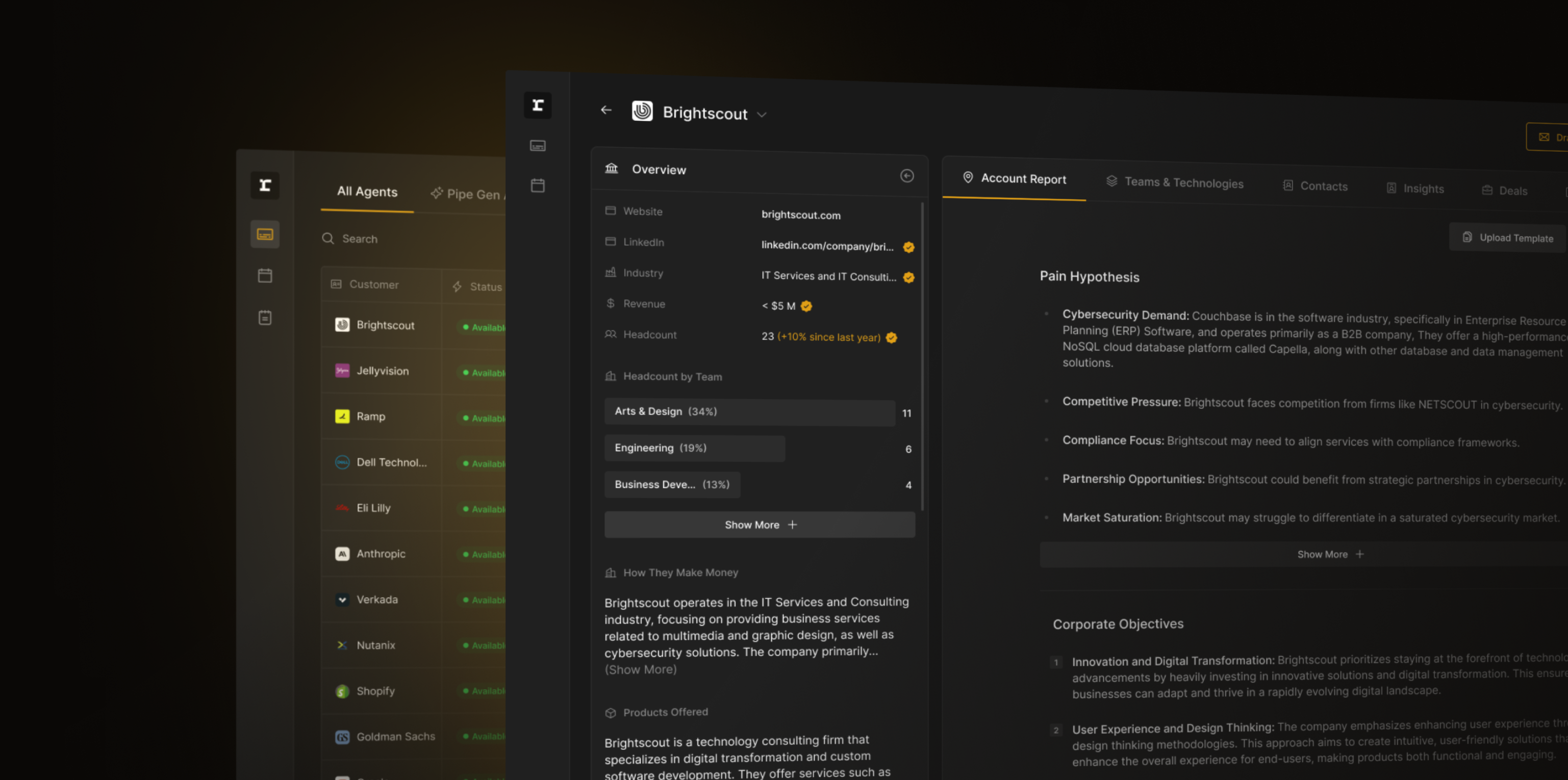
Rox recognized a massive opportunity within the current sales experience: embed the growing power of AI integration to amplify productivity and streamline the selling process. We partnered with Rox to develop a unique brand identity and collaborated closely to create this industry-changing product.
As the lead product designer, I worked end-to-end to help guide Rox's design process from research and ideation through the launch of their public beta.
*All motion work shown credited to Brightscout
Product
1 designer
Brand
2 designers.
Stakeholders
Co-founder, Product Lead
Potential partners / users
Development
2 developers (on client side).
Clarifying product understanding through collaborative workshops.
While brand worked with Rox's CEO and marketing team, I partnered with Rox's product lead and development team to hit the ground running on our design process.
Initial Understanding FigJam
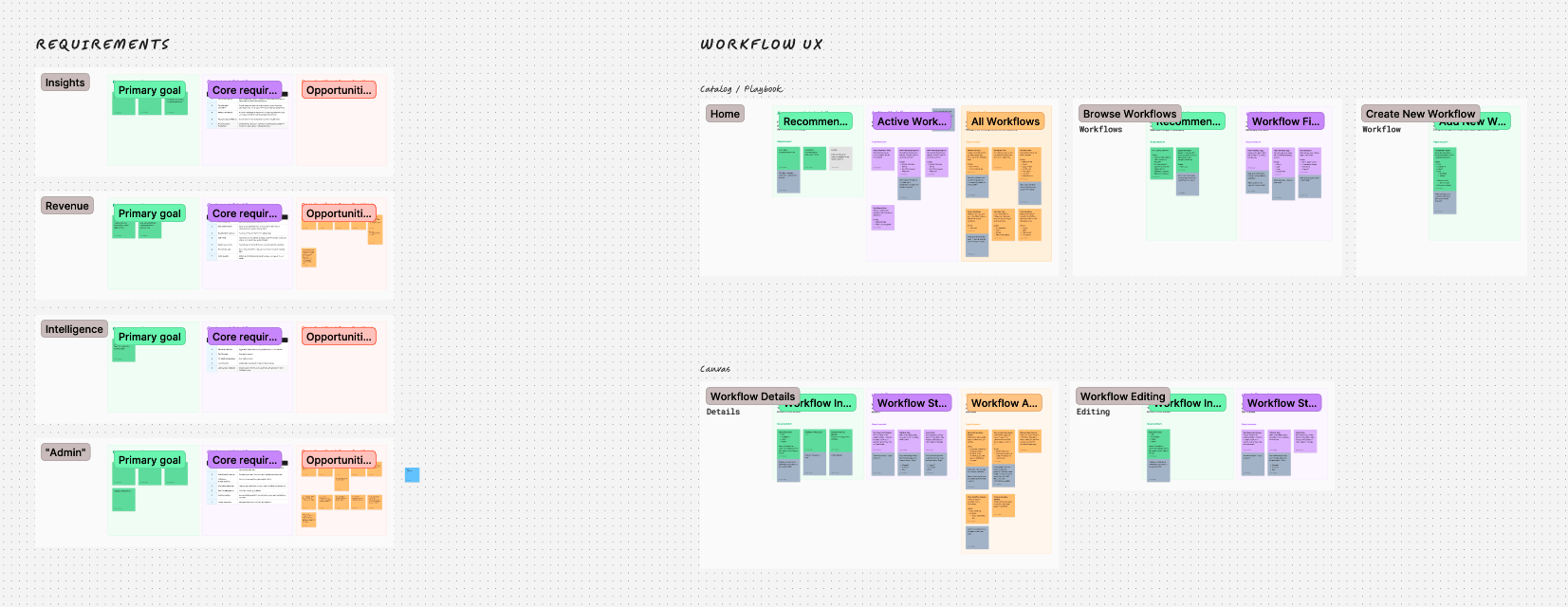
Ideology Pillars
Adaptive problem solving
The brief for this product was fairly broad, which would require us to navigate ambiguity and solve surfacing problems human-to-human, not just on a technical level.
Think fast, build fast
With design and development running in tandem, we knew we would need to quickly ideate, solve, and build "quick and dirty" solutions for feedback.
Rapid reprioritizitation
The nature of this product's requirements were consistently in flux, which required myself and the team to quickly map and reprioritize features sets and requirements on-the-fly.
Rapid iteration fueled by consistent partner feedback.
We began the project with an extended "iterative discovery" phase, throwing as many ideas at the wall as we could and utilizing rapid prototyping and "quick and dirty" builds of the potential product to gather insights and feedback from future users.
Through tight-knit communication and collaboration, the overlap between research, design, and development went from a concern to our biggest strength: allowing us to truly test out the waters of a myriad of design possibilities.
Product explorations varied widely in both presentation and AI integration, from insight dashboard to conversational chatbot and more. The approach presented a unique design challenge: navigating from ambiguity into the most usable state of the Rox product.
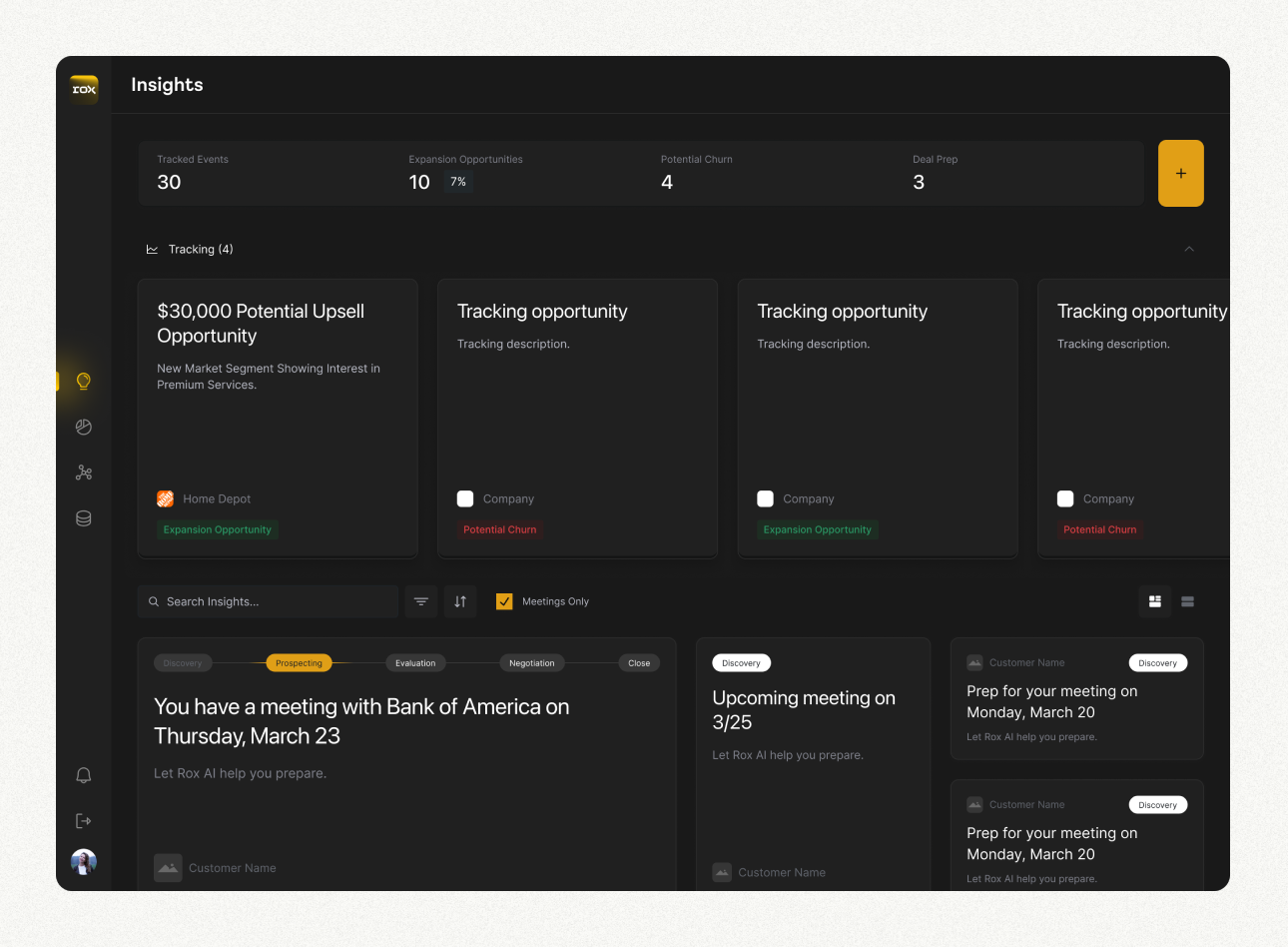
Discovery Dashboard
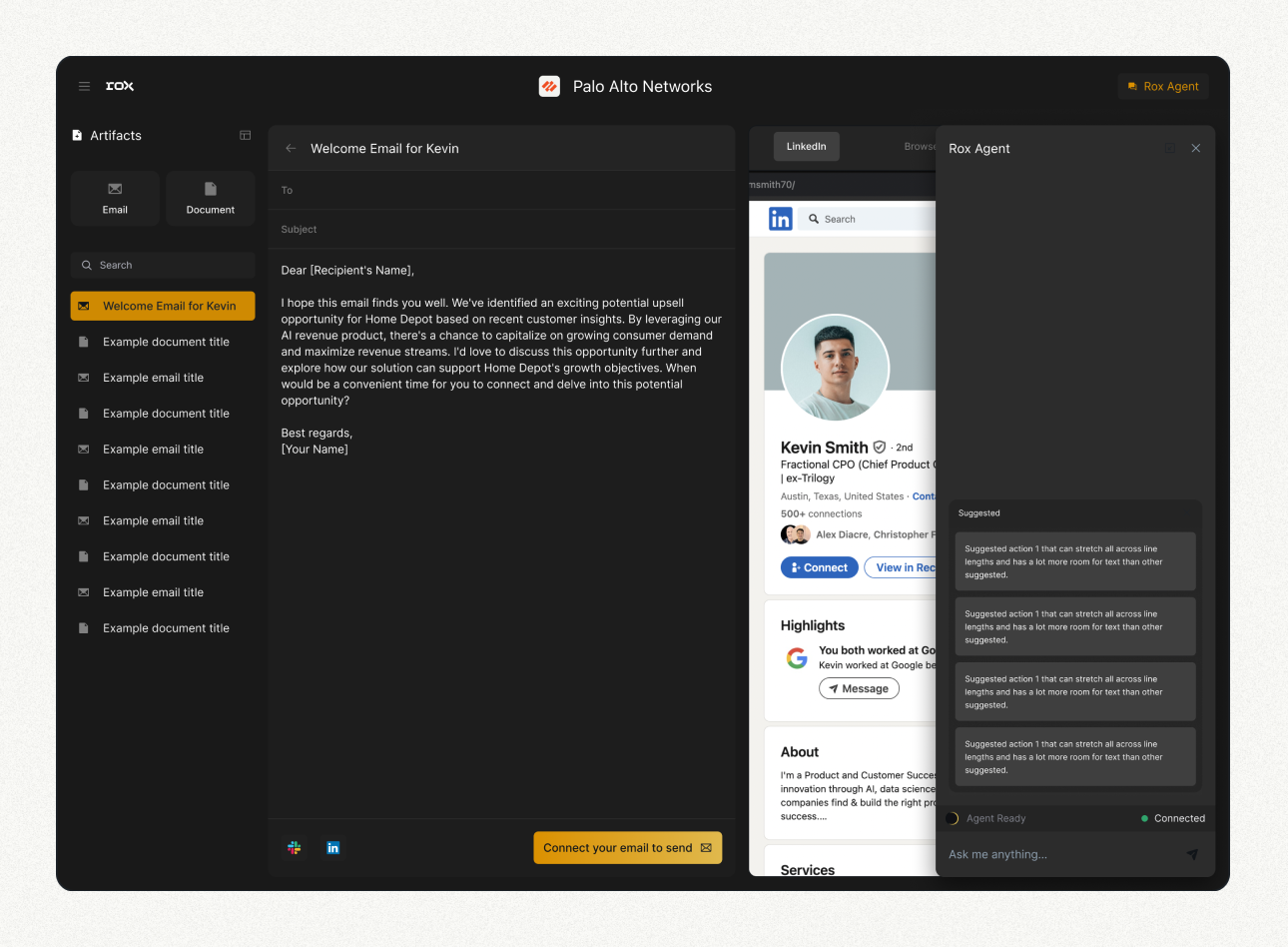
AI Canvas Workspace
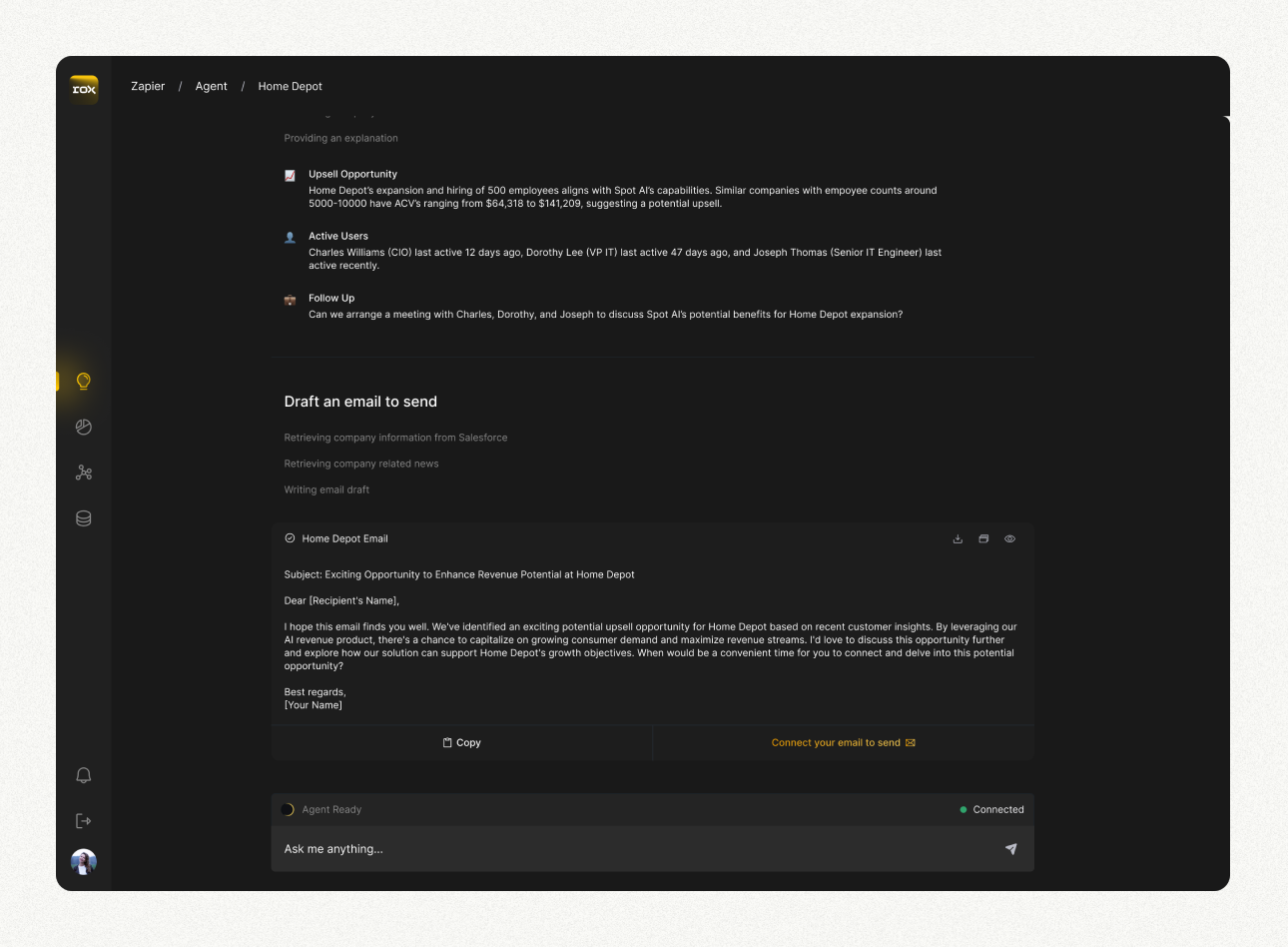
Dedicated Chatbot
Initial feedback pointed to a powerful AI chatbot being a promising approach. Users responded positively to the freeform aspect of modeling and controlling their conversations and insight gathering.
We moved forward with expanding on the chatbot approach, adding in requested feature sets such as suggested topics, chat sessions, and action documentation.
All that glitters... well, you know the rest.
Though initial user feedback to the chatbot product was positive, as we continued to expand on the product we quickly noticed that there were some shortfalls in capabilities, which would only bloat as the Rox product continued to grow in scale.
Cognitive load
Though the experience was familiar with users, a chatbot approach relied too heavily on sellers asking the right questions in order to get the right answers.
Sellers needed a product that was automated and proactive with delivering value at scale, without placing the entire burden on users.
Reduced efficiency
Sales teams need to move fast—time spent chatting with AI is time not spent closing deals.
Sellers needed to be able to at-a-glance understand and analyze the breadth of their deals and accounts, not continuously comb through discussions.
Adoption and engagement
Chatbots, though familiar, had a tendency to feel optional as opposed to a core aspect of the product experience.
From a business perspective, Rox anticipated a slower rate of adoption if the product continuously focused on a chatbot approach. Rox's AI capabilities were more powerful than what we could fit into the chatbot interaction model.
We took the feedback and problems in stride, turning them from a potential weakness into a new opportunity. The updated Rox product moved away from a reliance on conversational UX models and towards integration at both broad and granular levels, focusing in on the familiar aspect of a Seller's "Book of Business" and bolstering it with AI capabilities.
Designing a symbiotic relationship.
As the product expanded, our AI model had to expand as well. As we moved away from a conversational interface, we shifted the interaction model between AI and Seller to best accommodate users without being "in the way".
Our solution relied on strategic "bottlenecks" of interaction and content, aiming to keep Seller's in the drivers seat at all times. We automated the insight collection and discovery, moving it away from relying on user prompts and towards a constant aggregation of content that is always working in the background.
The ultimate control of content became up to the Seller– emphasizing the person-to-person tradition of the industry. Rox dubbed these agent "swarms", allowing users to drill-down into information or command the AI at any point.
An AI-driven hub of information, right at a seller's fingertips.
The revised product focuses in on a unified view of all active accounts at once, providing sellers a simplified (and familiar) table for to continuously monitor and analyze.
Dubbed an agent "swarm", Rox's AI continuously pulls, processes and monitors all external and internal information about customers, placing all needed information at the forefront of the product and letting sellers use the insights to their advantage.
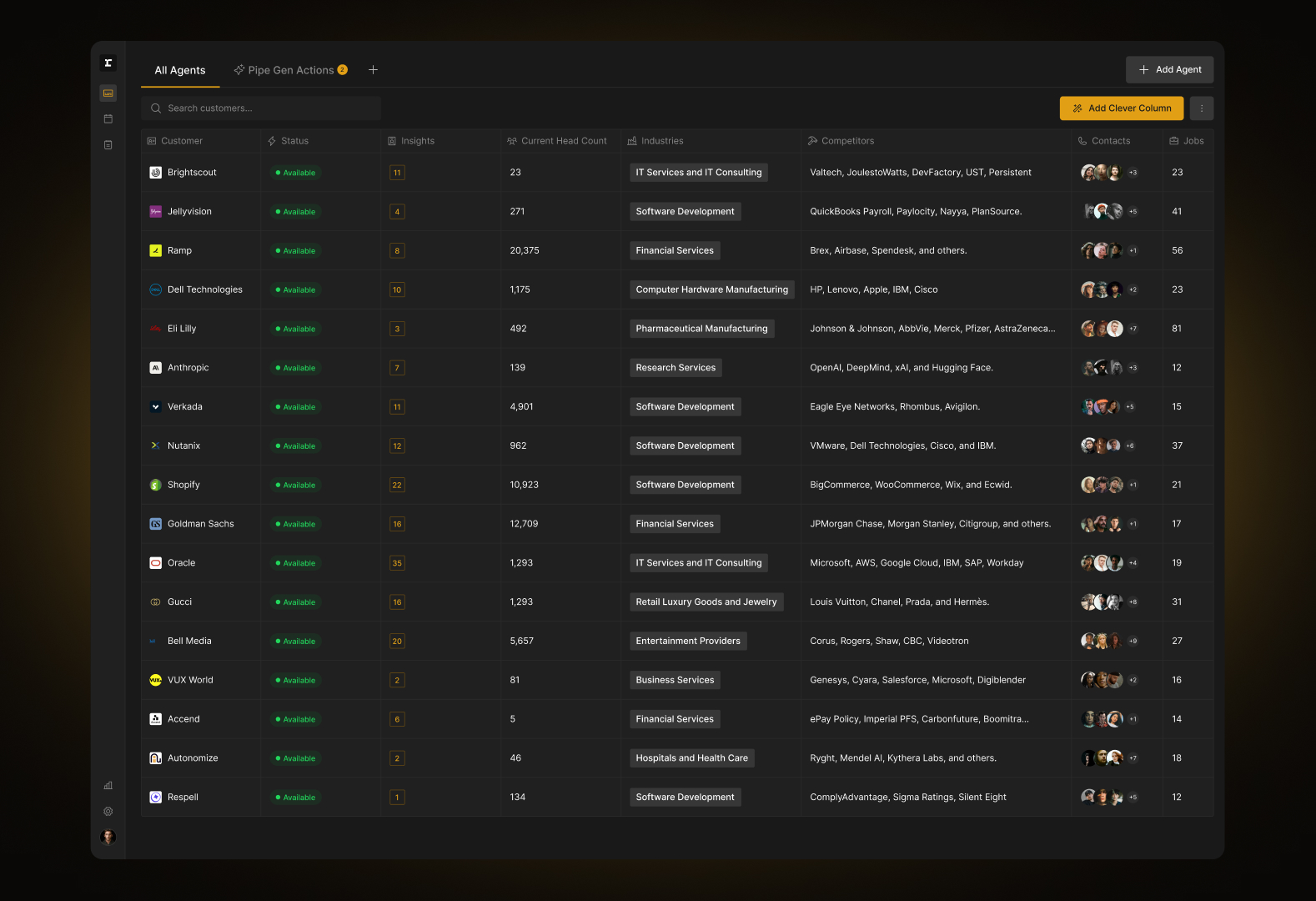
Customers View
A Seller's agents are listed in a standardized, table view– allowing an at-a-glance understanding of their entire sales process and relevant companies.
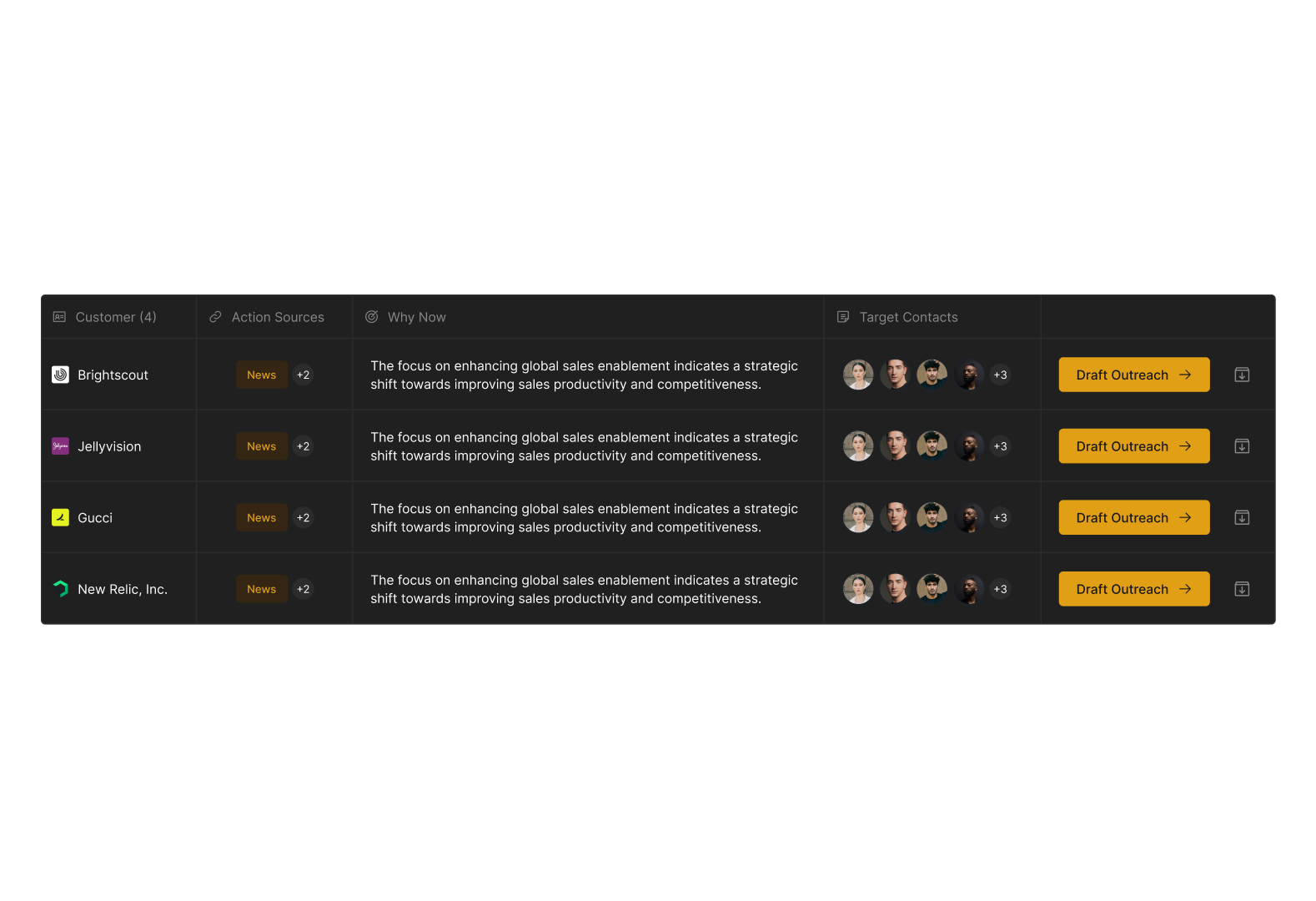
Pipeline Generation
Rox dedicates a customized space for deals and opportunities in their agents.
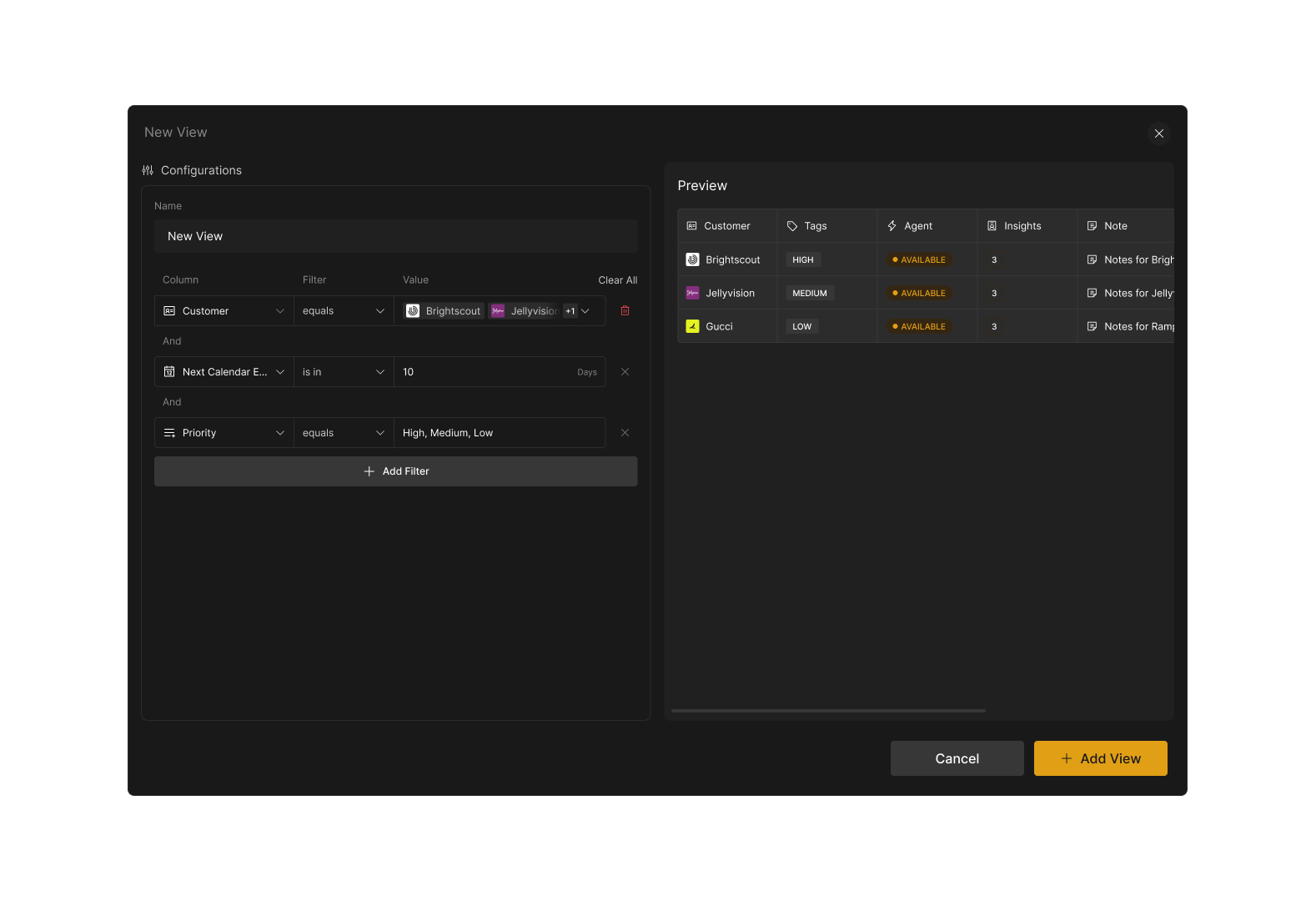
Adding New Views
Users can utilize custom filters to add new views to their Agents section.
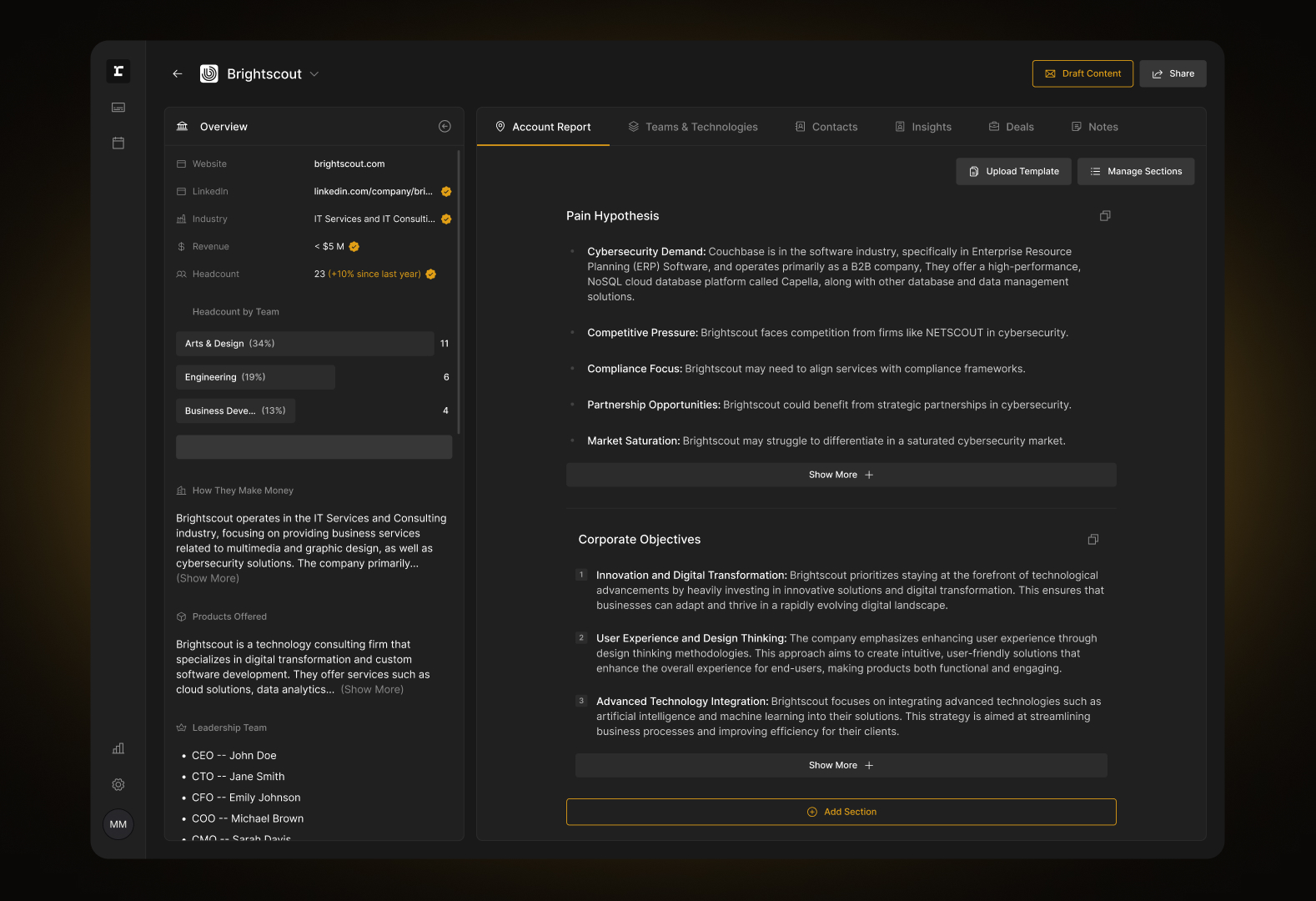
Agent Page
Sellers can navigate into a specific agent to find customized reports, company information, and resources to best prepare them for navigating opportunities.
Expanding product offerings to create a singular source-of-truth.
Once the core experience of the product was defined, we focused our efforts on analyzing additional user needs and expanding Rox's feature set to match.
Utilizing the AI model to centralize information and capabilities, we evolved the experience from an agent swarm touchpoint towards an all-encompassing revenue product.
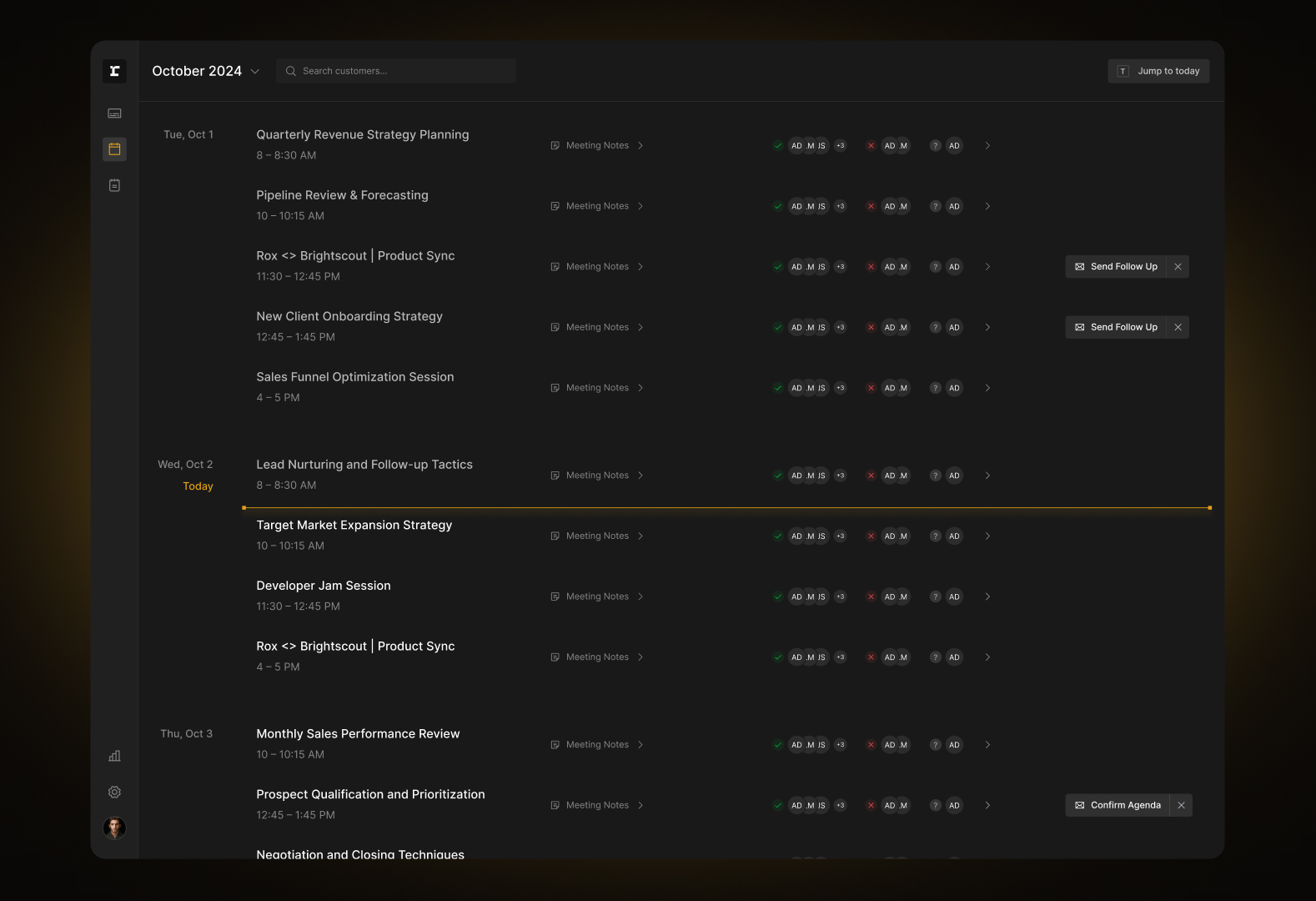
Briefings
We designed a simplistic daily schedule view for Sellers in response to a call for a one-stop view of their daily meeting schedule. Rox generates custom AI briefings for each event, helping Sellers best prepare for their meetings.
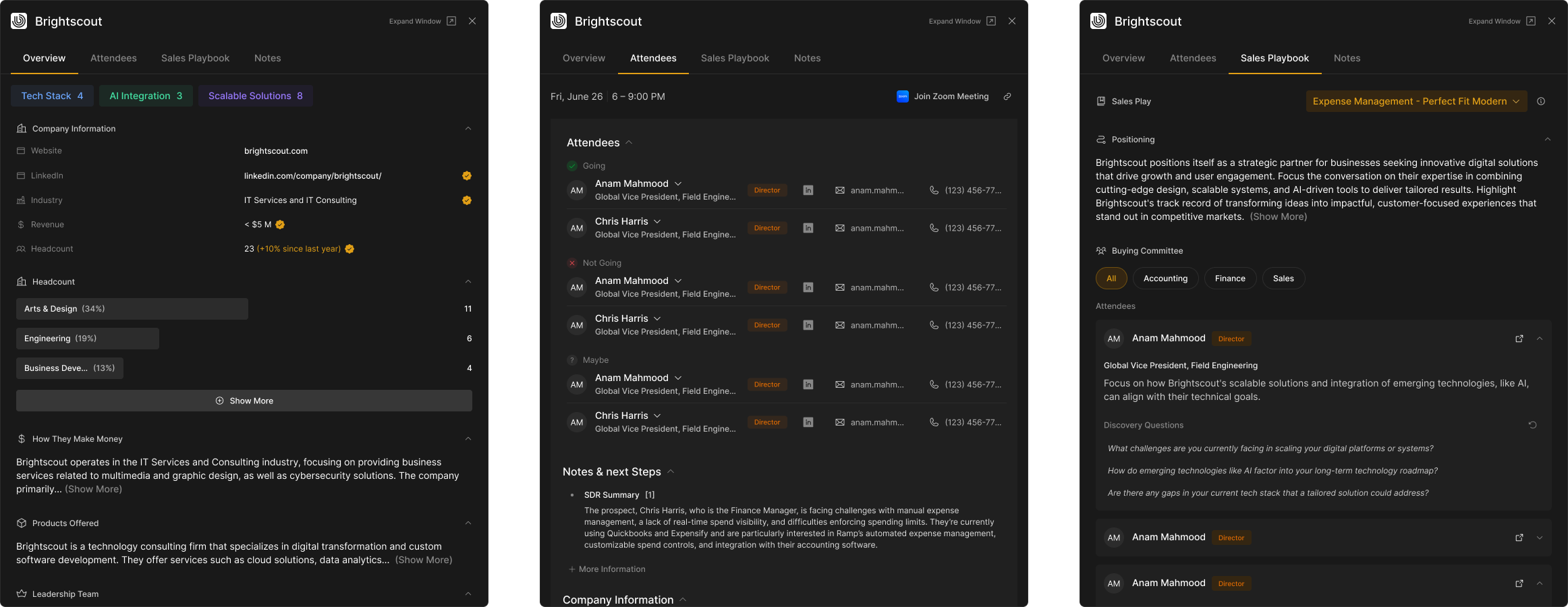
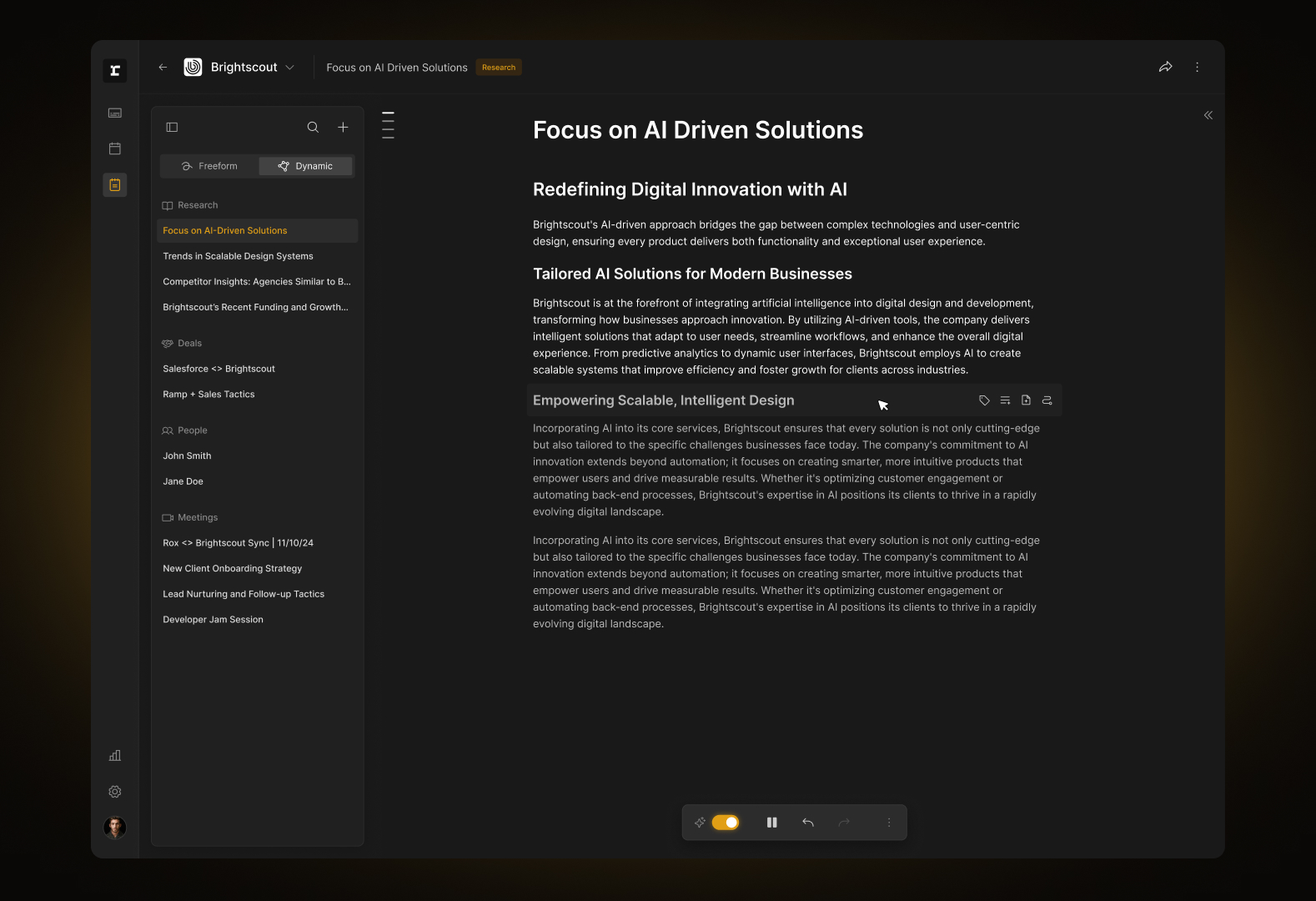
Scratchpad
We refreshed and updated the original notes functionality with a dedicated product section and new features, fusing the AI and seller personas to create a powerhouse of documentation.
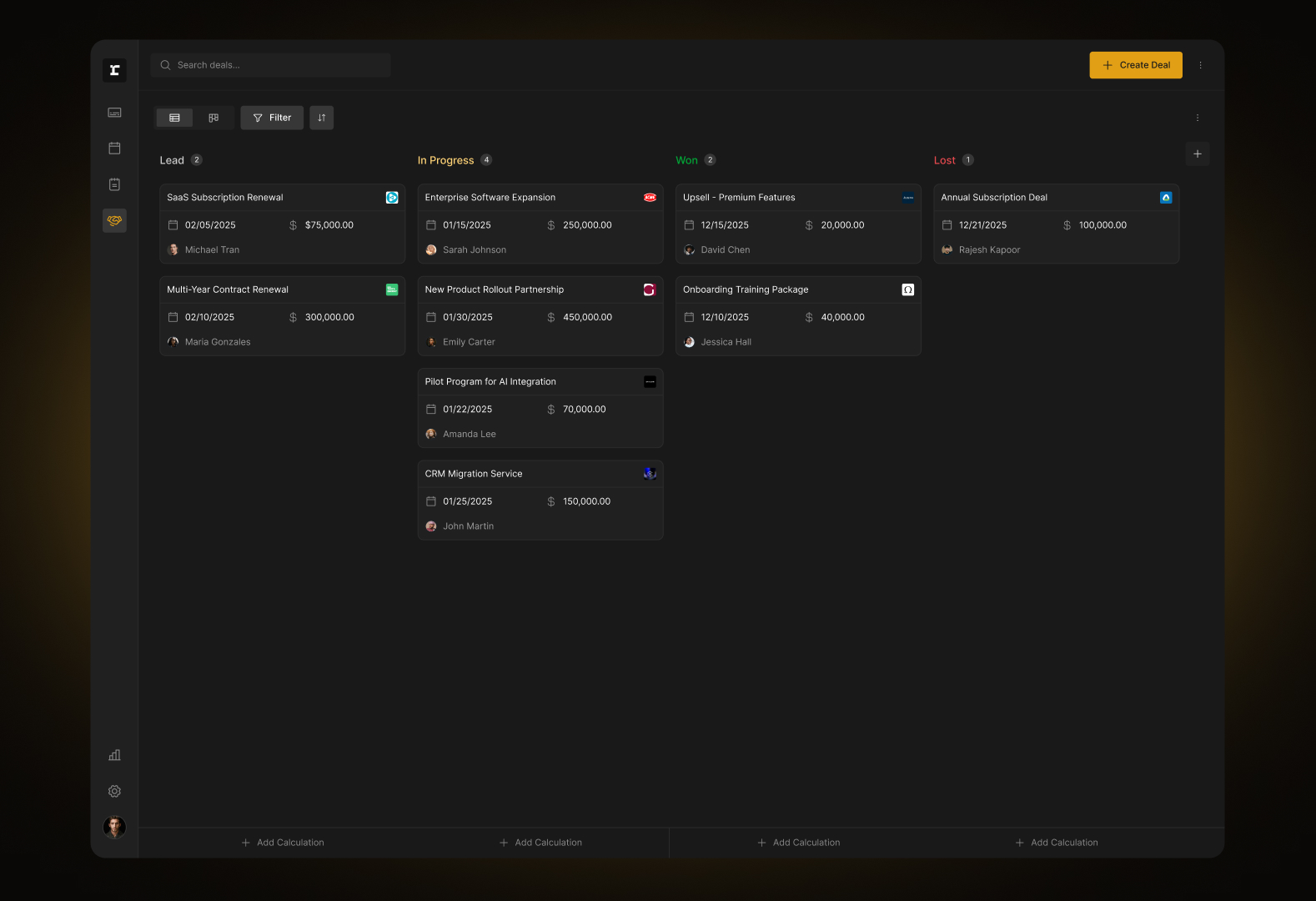
Deals
To allow Sellers a centralized way to view and track their opportunities, we designed a powerful tracking hub that houses both standard and kan-ban tracking views.
Documentation +
Design Continuation
We provided tangible artifacts for the Rox development team to utilize, collapsing components into a shareable design system file. Additionally, we are continuously expanding the product to assist Rox in providing a scaleable product for users.
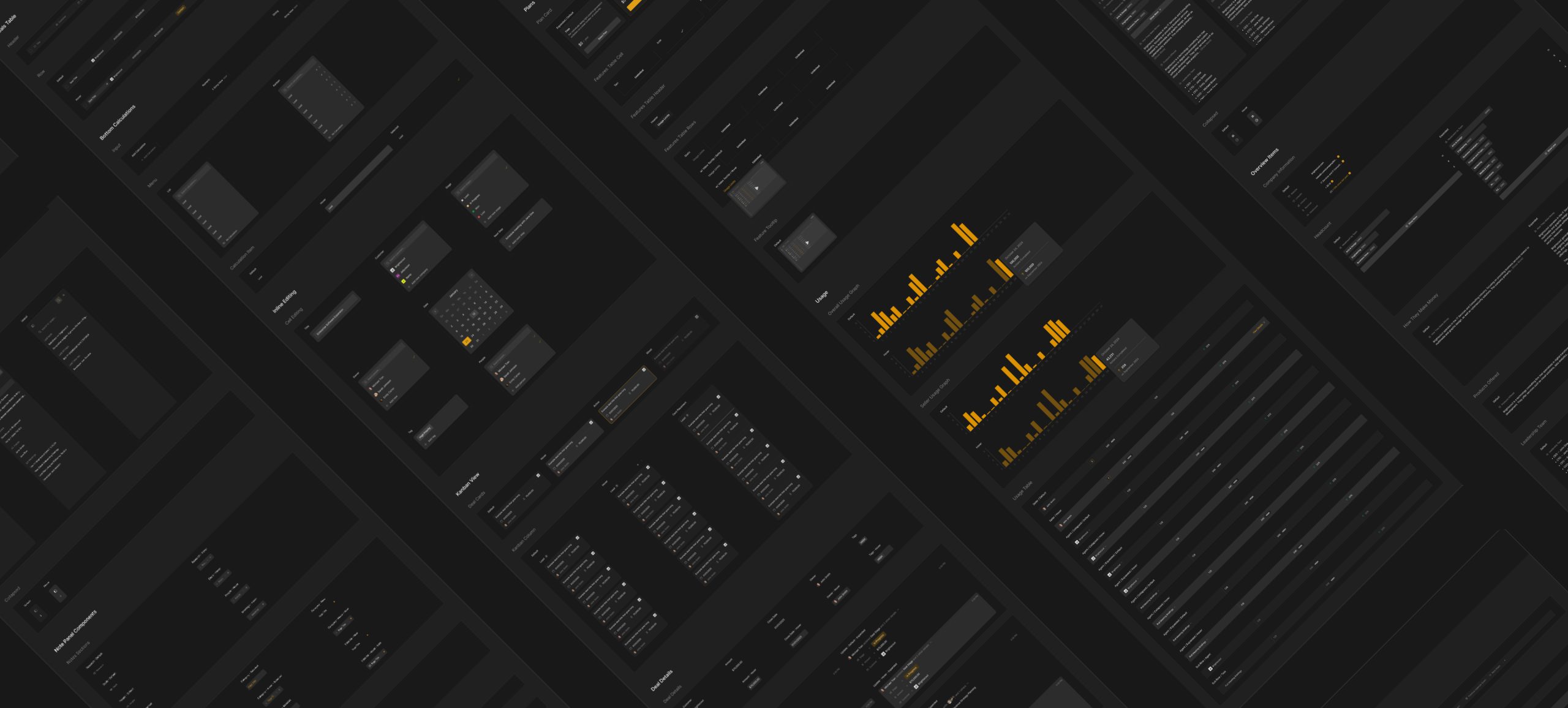
$50M
Revenue raised with launch of public beta.
30%+
Boost in sales teams productivity.
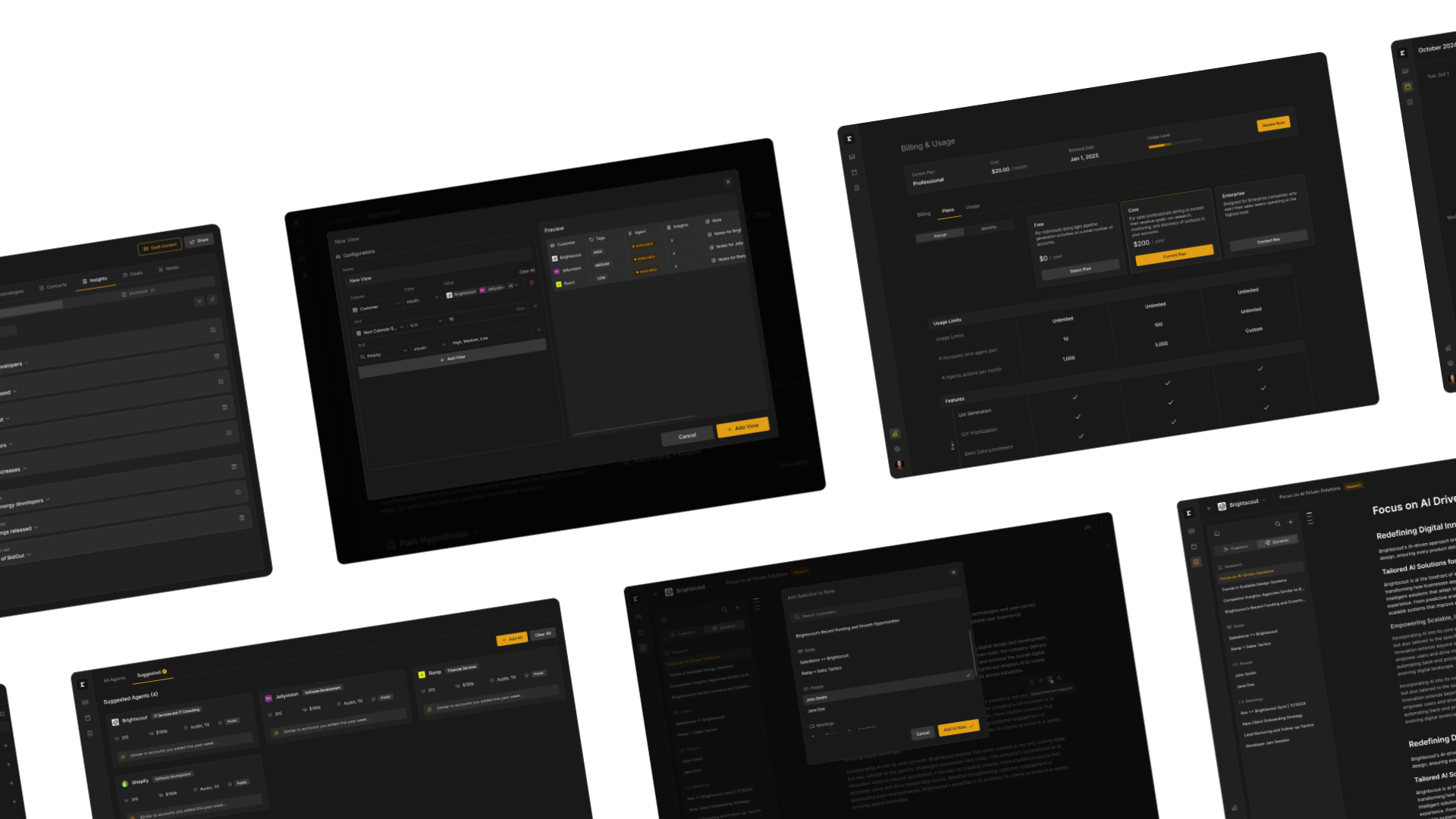
Learnings
The balancing act
Experience design encompasses two entities: the user, and the business. Learning how to balance, intertwine, and bolster both helped me to grow as a designer.
Cross-communication
With the development/engineering team being a part of the client as opposed to our agency, it required an enhanced level of organization, documentation, and understandability of designs.
Adaptability
The ever-changing focus of the product required me to understand how to adapt on-the-fly to new feature requests and new challenges.
LIAM MADIGAN
CHICAGO, IL
© 2025
LMADIGANDESIGN@GMAIL.COM